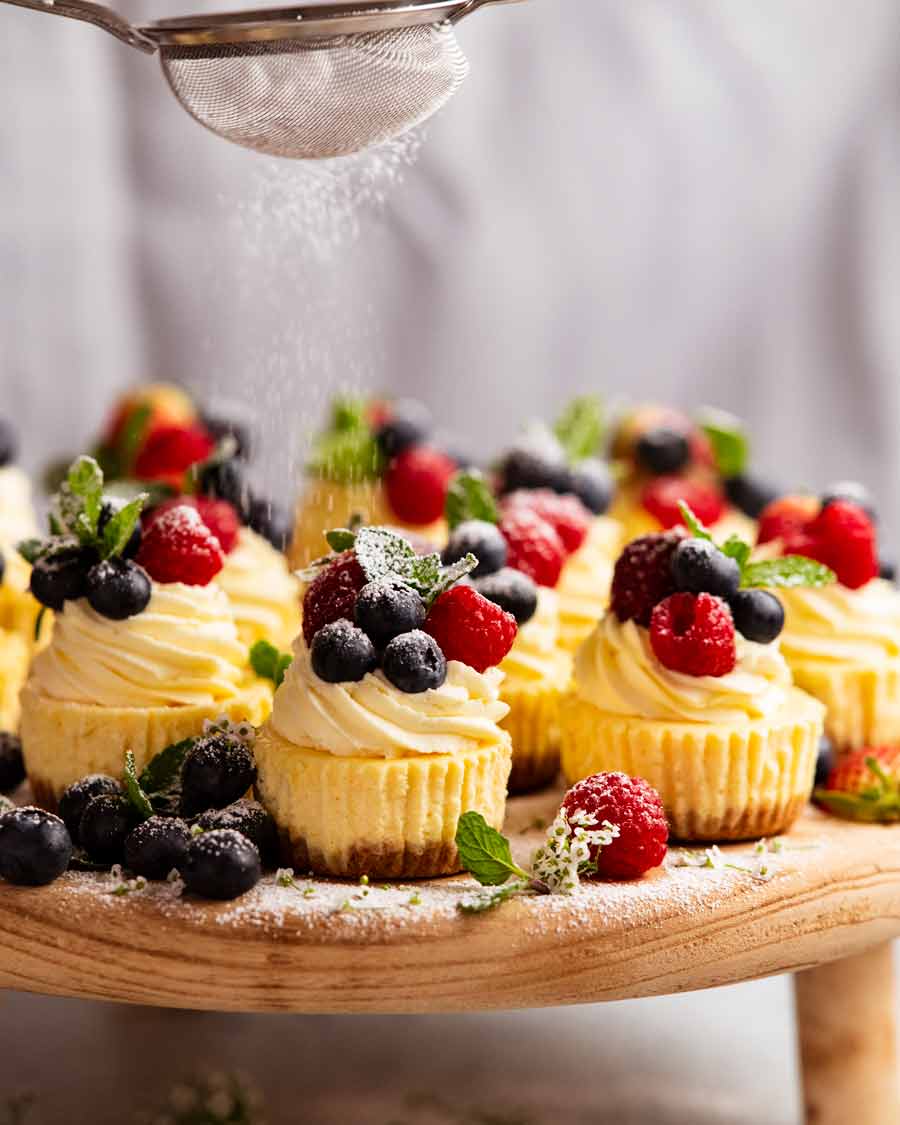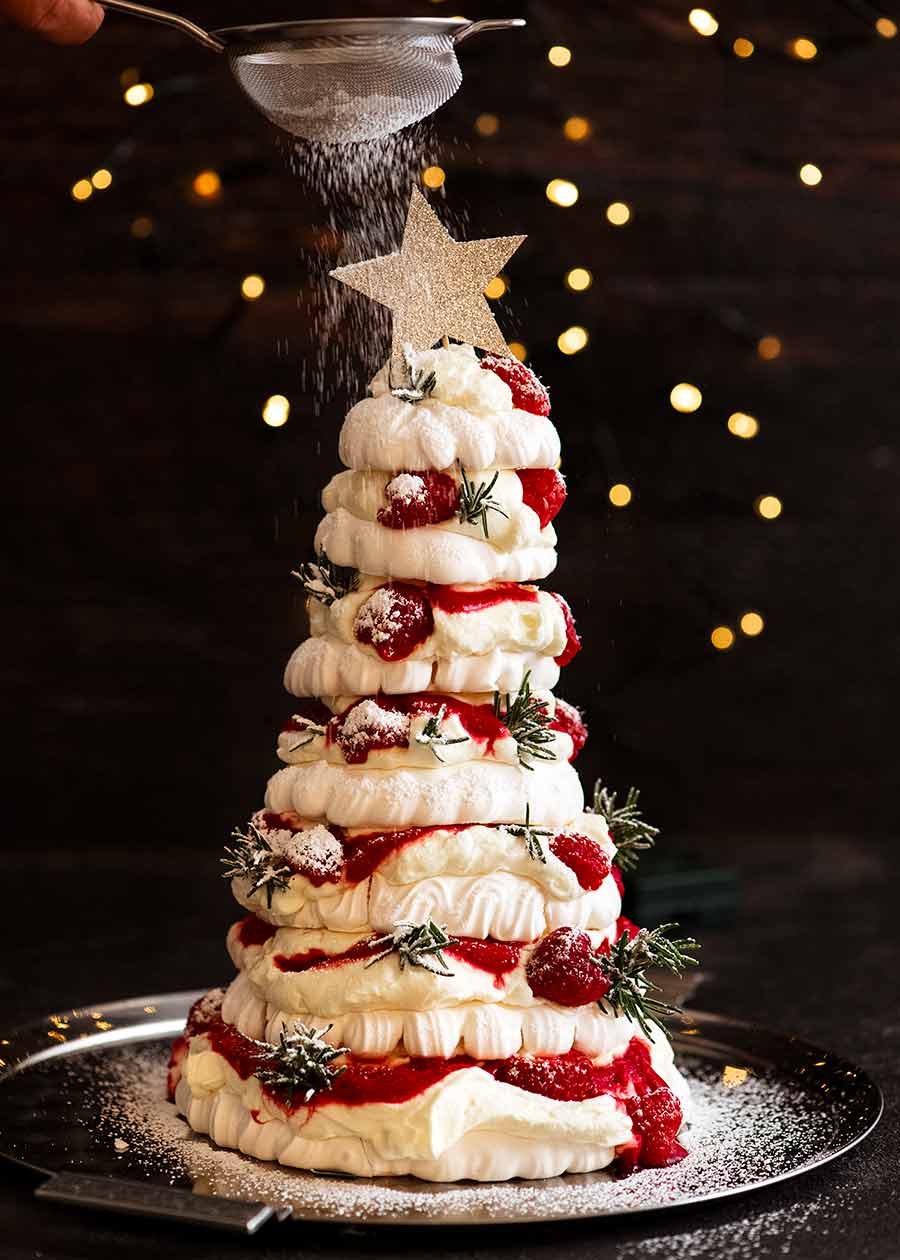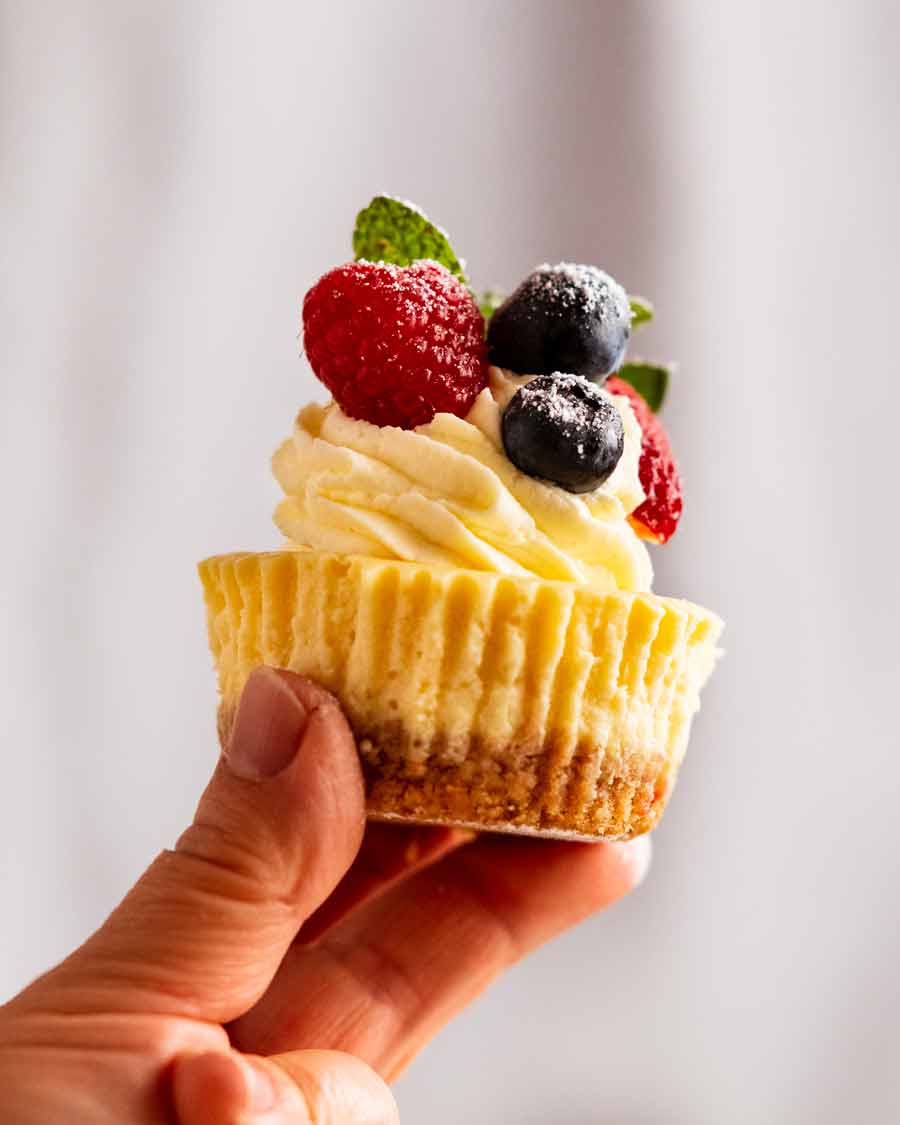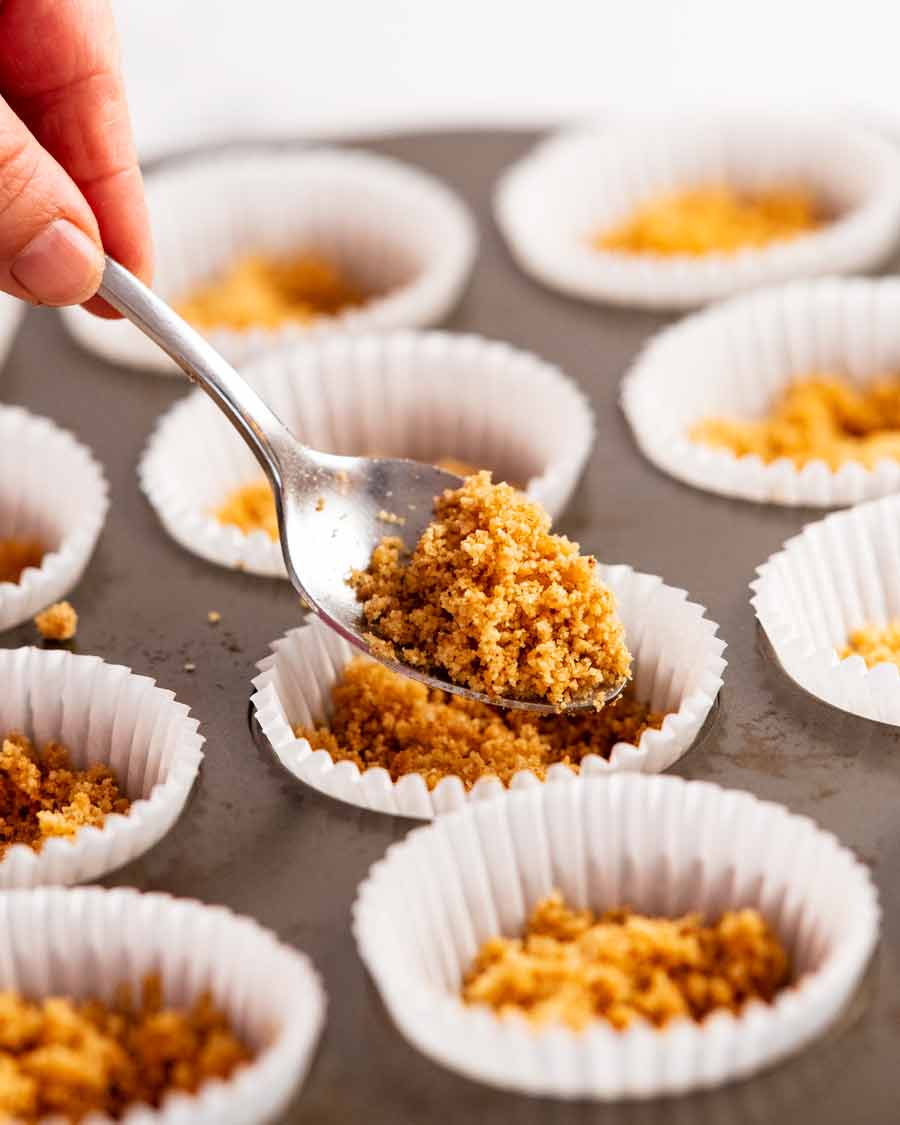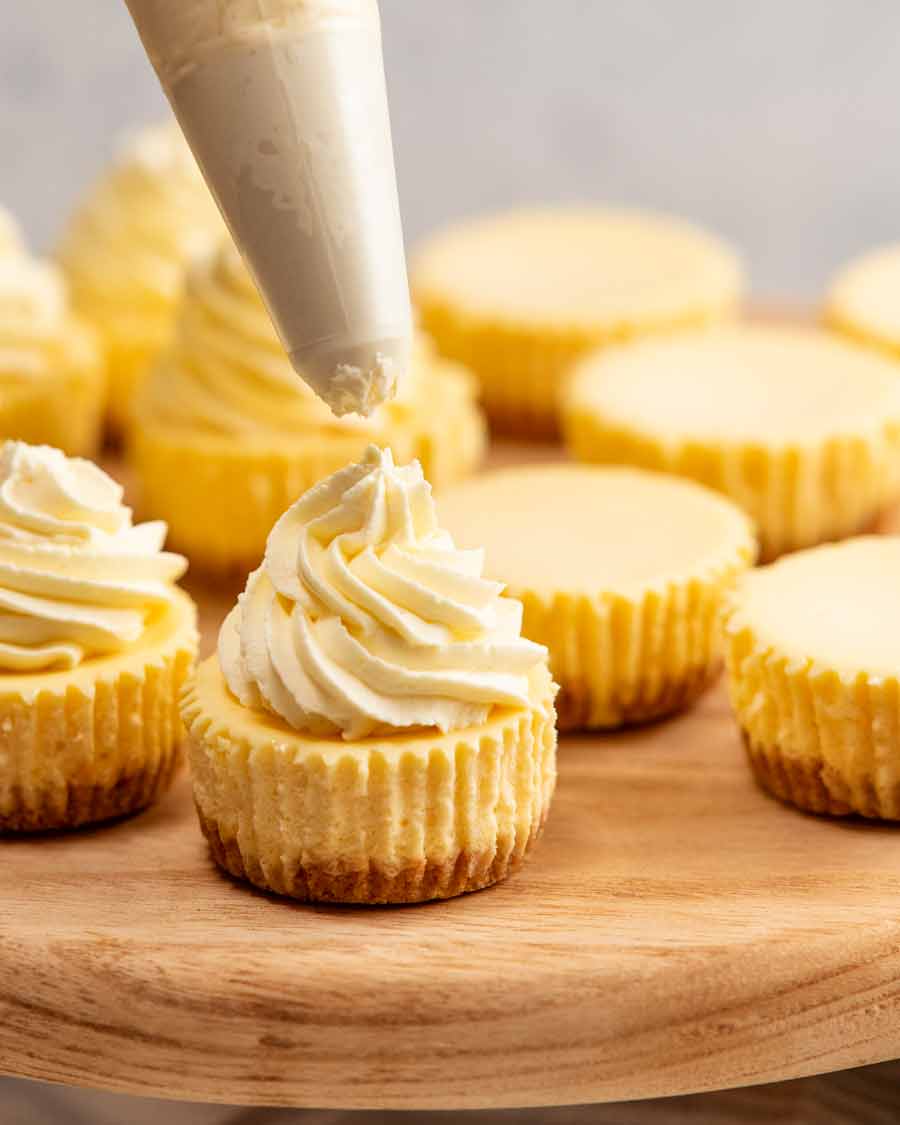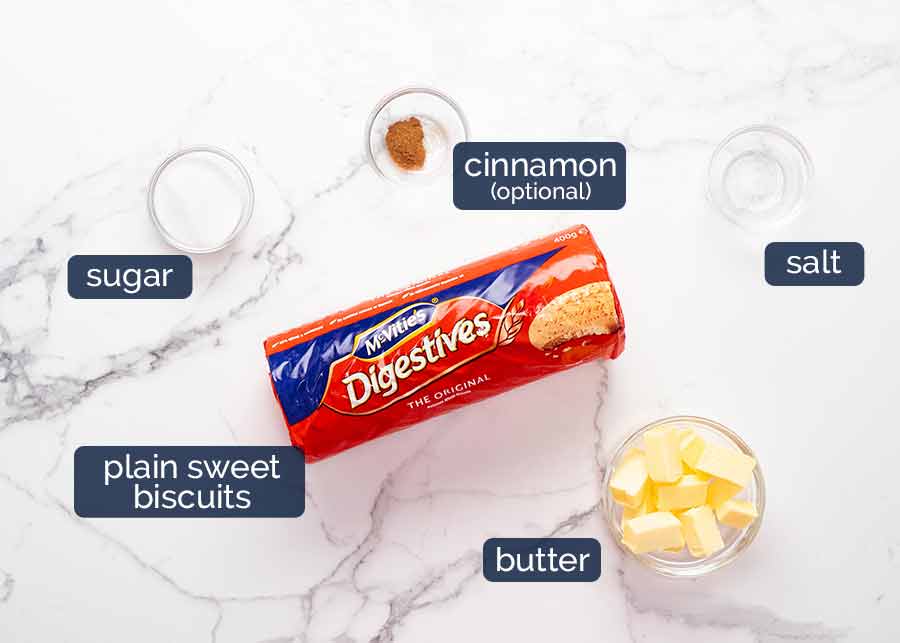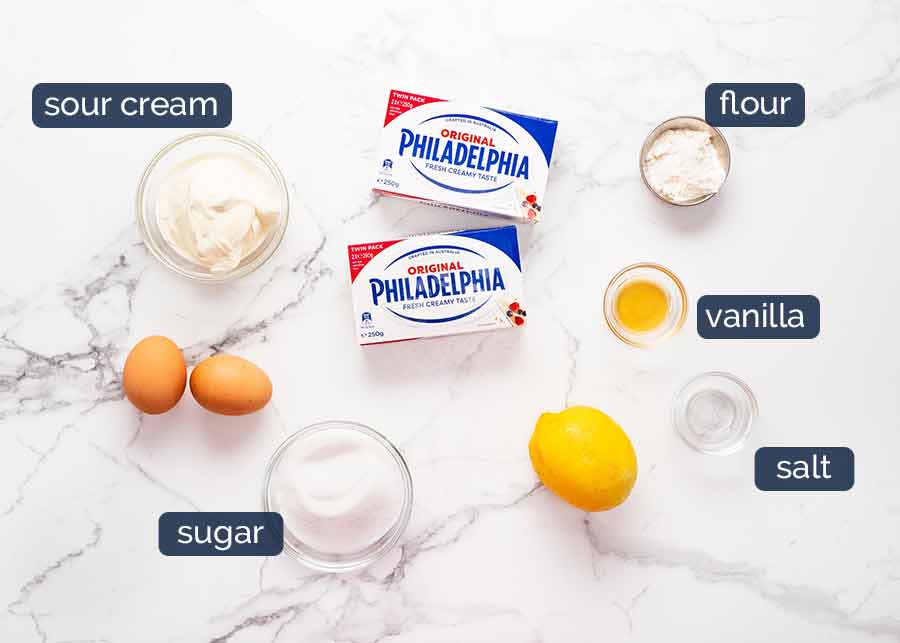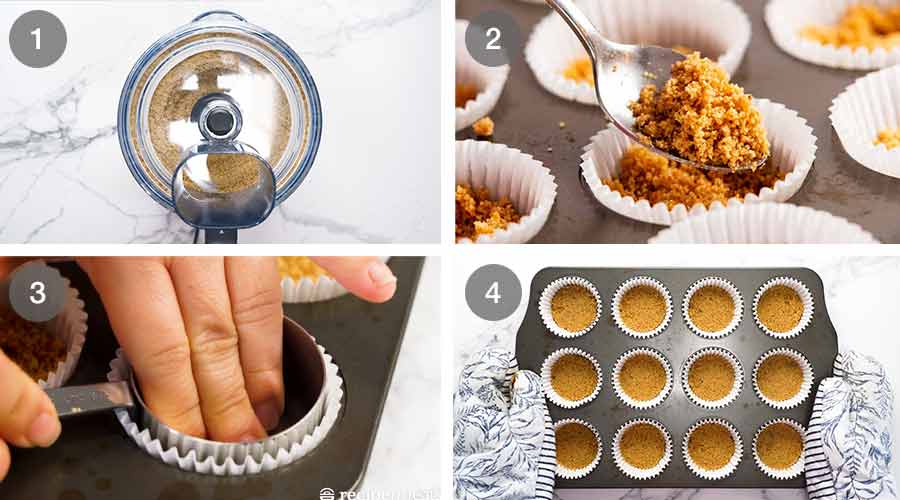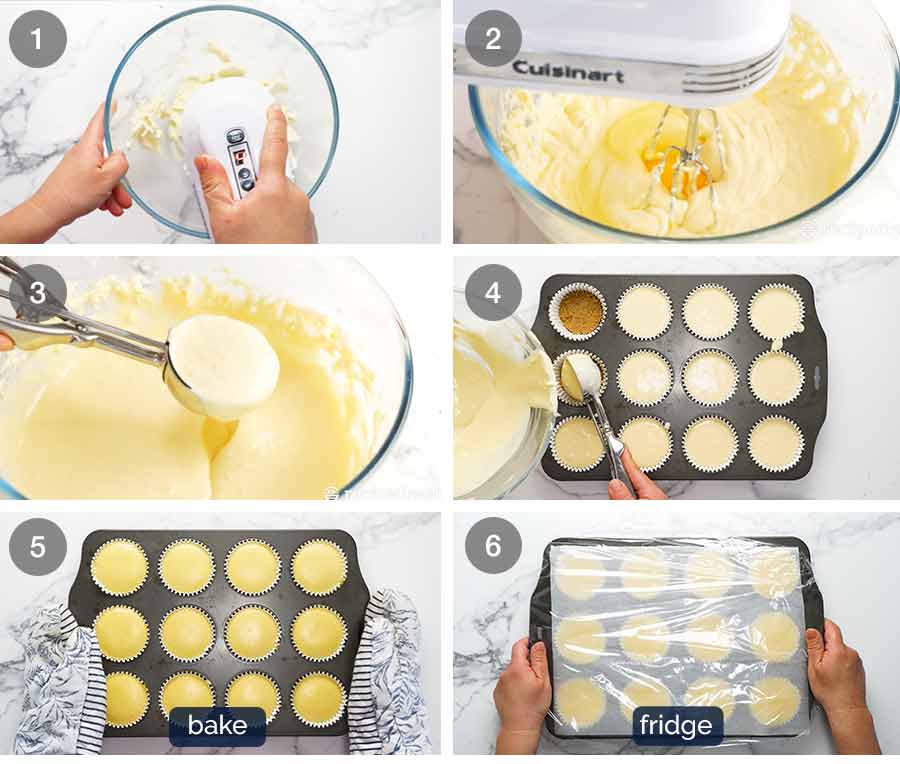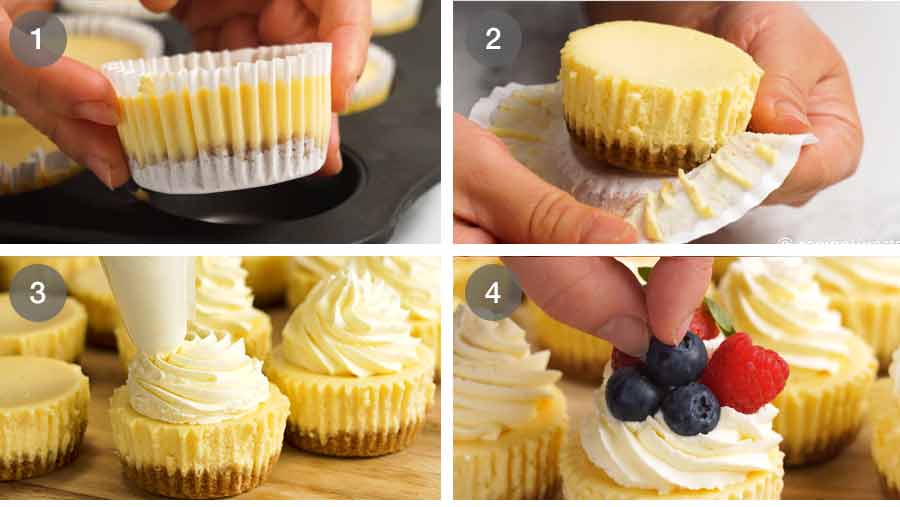Mini cheesecakes
When it comes to party season, my dessert game plan is pretty predictable and heads in one of two directions. If I have the time and really want to make a splash, I’ll go for a big statement piece like the famous Pavlova Christmas Tree or Never-Ending Meringue Tart, the latter aptly named because you can make it as impressively loooong as you want (4 metres / 12 feet is my record to date!) But when I know I’ll be pressed for time – and the holiday season this year will be such a year – I’m always thinking what I can cook up for post-feast sweets that will still make an impact but without the stress. My tick boxes are for something low-risk, make-ahead, pretty, easy to transport and a guaranteed crowd pleaser. Enter this year’s dessert to the rescue: Mini Cheesecakes! They’re easier to make than one large cheesecake (which are kind of fragile), with the convenience of side-stepping all the hassles of slicing and doling out with plates and cutlery. You can literally eat these with your hands like cupcakes. And they are just adorable!
What you need for mini cheesecakes
Here’s what you need to make mini cheesecakes.
1. The biscuit base
Biscuits – My biscuit of choice for mini cheesecakes is digestive biscuits, for flavour and for the texture. These are a popular biscuit in the UK but also common in Australian grocery stores these days. They are firm but have a crumbly texture so they form crumbs easily, and are not as dry as other plain sweet biscuits.Substitute with:– Graham crackers: Very similar in both flavour and texture to Digestives.– Arnott’s Marie crackers: I use these for large cheesecakes but I found the base a bit dry when I made these mini cheesecakes. However this is easily countered with some extra butter.– Any other plain sweet biscuits: Just make the biscuit base as written and add a bit of extra butter if needed to achieve the “wet sand” texture you need. Butter – To add flavour and fat to the base, and as a binding so the biscuit crumbs coalesce into a solid base; Sugar – For a little extra sweetness. We don’t need much. Cinnamon – Optional, but I like the extra touch of flavour it brings to the biscuit base. Salt – Just a pinch.
2. The cheesecake filling
The key to a creamy smooth cheesecake filling is to ensure the cold ingredients are at room temperature. Substitute with:– Graham crackers: Very similar in both flavour and texture to Digestives.– Arnott’s Marie crackers: I use these for large cheesecakes but I found the base a bit dry when I made these mini cheesecakes. However this is easily countered with some extra butter.– Any other plain sweet biscuits: Just make the biscuit base as written and add a bit of extra butter if needed to achieve the “wet sand” texture you need.
Cream cheese – The primary ingredient in cheesecake! I have always used Philadelphia cream cheese which is the best known cream cheese brand. Use the block sort not the creamy spreadable tub kind, which tends to be softer.Full fat cream cheese is essential here! Low fat cream cheese won’t set as well and doesn’t have the same flavour. It’s all in or make something else, I say! Sour cream – This might sound strange but sour cream lightens the cheesecake filling so it’s not as dense. This is a “secret ingredient” I use to make cheesecakes luscious but not overly rich.You can probably get away with low fat but I haven’t tried it. Plain yogurt also works as a substitute. Sugar – It’s best to use caster sugar / superfine sugar as the grains are smaller so they will dissolve more easily into the filling mixture. Regular sugar will work too but will require more beating to dissolve. This means your mixture will be more aerated which will lead to some surface bubbles on the cheesecake (not the end of the world though, as we cover it with cream!). Flour – Just a bit, to provide a bit of stability to the filling and make it set. Without this, the filling sets a bit too flabby and loose. Eggs – This is our binding agent for the filling that holds everything together. Eggs, the ultimate food glue!Make sure the eggs are at room temperature and not fridge-cold. This way they will incorporate more easily into the batter and you won’t run the risk of curdling the mixture. Yup, been there, done that! To quickly bring eggs to room temperature, just submerge in warm water for 5 minutes. Vanilla – For flavour. I like to use extract rather than imitation essence which is, well, fake. I don’t use real vanilla beans for general baking. I reserve that good stuff for special things like Creme Brûlée, Creme Anglaise (pouring custard). Salt – It’s generally good baking practice to add a bit of salt to most dishes to bring out the flavour of other ingredients. It will not make this taste salty. Lemon zest – Always welcome in rich things, it brings a touch of brightness to offset some of the creaminess. It doesn’t make this taste like a lemon cheesecake. You need a LOT of zest for a pronounced lemon flavour in cheesecakes, as I found out when creating Lemon Cheesecake for my cookbook!
Full fat cream cheese is essential here! Low fat cream cheese won’t set as well and doesn’t have the same flavour. It’s all in or make something else, I say! You can probably get away with low fat but I haven’t tried it. Plain yogurt also works as a substitute. Make sure the eggs are at room temperature and not fridge-cold. This way they will incorporate more easily into the batter and you won’t run the risk of curdling the mixture. Yup, been there, done that! To quickly bring eggs to room temperature, just submerge in warm water for 5 minutes.
How to make Mini Cheesecakes
Nice and straightforward. And I really like that you can make these cheesecake days in advance! Don’t worry if you don’t have a food processor or electric beater, there’s other means to make this.
1. Base
Blitz – Place the biscuits in a food processor and blitz until they become fine crumbs. It takes about 10 seconds in my food processor. Start by pulsing then blitz on high until done. Then add everything else (melted butter, cinnamon, sugar, salt) and blitz again briefly to combine.Don’t have a food processor? No problems. Just put the biscuits in a ziplock bag and bash using a rolling pin or large tin. It’s very satisfying! Wet sand texture – The mixture should look like wet sand and holds together when you pinch it between your fingers. Divide the mixture between paper muffin tin liners sitting in each hole. Press and flatten the crumbs firmly into the base of each hole using something round with a flat base. A 1/4 cup measure is the perfect tool for me. Bake for 7 minutes then remove and cool for 5 minutes before topping with the cheesecake filling.
2. Cheesecake filling
The goal with the filling is to make it as smooth as you can yet beating as little possible. This will minimise the amount of air bubbles in the mixture so you don’t end up with bubbles or cracks on the surface. Don’t have a food processor? No problems. Just put the biscuits in a ziplock bag and bash using a rolling pin or large tin. It’s very satisfying! I assume you’ve figured out that this also means the filling is FAST to make!🙌🏻
3. Decorating!
More decorating suggestions
Sliced/diced soft tropical fruit like mango, kiwi, peach Passionfruit – always a nice finishing touch! A drizzle of chocolate, Nutella or caramel Colourful sprinkles or silver balls (festive season!) Fruit compote Toppings I use for my Strawberry or Blueberry Cheesecakes
The practical stuff: Storage and serving tips
The making part done, I have some practical tips to share with you on serving, storage and assembling so you pull off your dessert without a hitch on party day! In no particular order: Don’t have an electric beater? Just make sure the cream cheese is quite soft then just use a handheld whisk / wooden spoon. It works because we aren’t trying to fluff up the cream cheese like we do with butter for things like buttercream frosting. All we want is to make the cream cheese smooth. I like to use an ice cream scoop with a lever. It’s very handy for muffins, cupcakes, pancakes, fritters …. AND ice cream! Once baked, the filling should still be soft and supple in the centre, not rock hard. But not jiggling like there’s liquid underneath. If it’s too soft, pop it back in the oven for a few minutes. Fridge – Cover the surface with a sheet of baking/parchment paper then seal with cling wrap. Place in the fridge for at least 6 hours to fully set, preferably overnight.
Storage – Keep them in the fridge. They’re excellent for 24 hours after making, and still very, very good at 48 hours. Beyond this the base starts getting softer than is ideal but nobody complains. If needed it keeps for 5 days at least, probably longer. But note the cream will start to deflate after around 24 hours. See tips below for assembling and stabilised cream. Freezing – The naked cheesecake (ie. no cream) can be frozen for up to 3 months then thawed. Serve at room temperature – Ideally. Cheesecake is creamier and you can taste more flavours when it’s at room temperature. Though on hot summer days cold cheesecake from the fridge is lovely! In my perfect scenario, I de-chill the cheesecake for 30 minutes to 1 hour, then I decorate just prior to serving.
The practical stuff (continued)
Decorating – Regular freshly whipped cream deflates with time so try to assemble as close to serving as you can. When I really want to impress, I take the Chantilly cream ingredients and equipment with me and whip the cream close to serving. If I’m feeling more relaxed, I’ll just decorate the cheesecakes prior to leaving my house and put it straight in the fridge when I arrive,. They are fine for a few hours. The cream will deflate a bit but if you whip until stiff it will hold its piped shape for a day. Stabilised cream – For the best make-ahead results, use a stabilised cream. To do this, switch 1/4 of the (unwhipped) whipping cream with marscapone cheese, a rich Italian soft cheese that tastes like whipped cream but has the texture of spreadable cream cheese. When you whip marscapone with ordinary cream, the resulting cream stays light and fluffy for far longer than plain whipped cream, ie. it is “stabilised”. It will remain fluffy and near-perfect for 24 to 36 hours. Beyond this, it starts to deflate slightly but is still far superior to plain whipped cream!
And with that, it’s over and out for me! If I’m feeling more relaxed, I’ll just decorate the cheesecakes prior to leaving my house and put it straight in the fridge when I arrive,. They are fine for a few hours. The cream will deflate a bit but if you whip until stiff it will hold its piped shape for a day. When you whip marscapone with ordinary cream, the resulting cream stays light and fluffy for far longer than plain whipped cream, ie. it is “stabilised”. It will remain fluffy and near-perfect for 24 to 36 hours. Beyond this, it starts to deflate slightly but is still far superior to plain whipped cream! Time to hand over to you. What do you think of the cheesecake? Is this holiday gatherings-worthy? What will you decorate yours with? Tell me below, I want to know! – Nagi x
Watch how to make it
Life of Dozer
Another Melbourne Cup, another RecipeTin Yakitori backyard BBQ, another Dozer headpiece!
